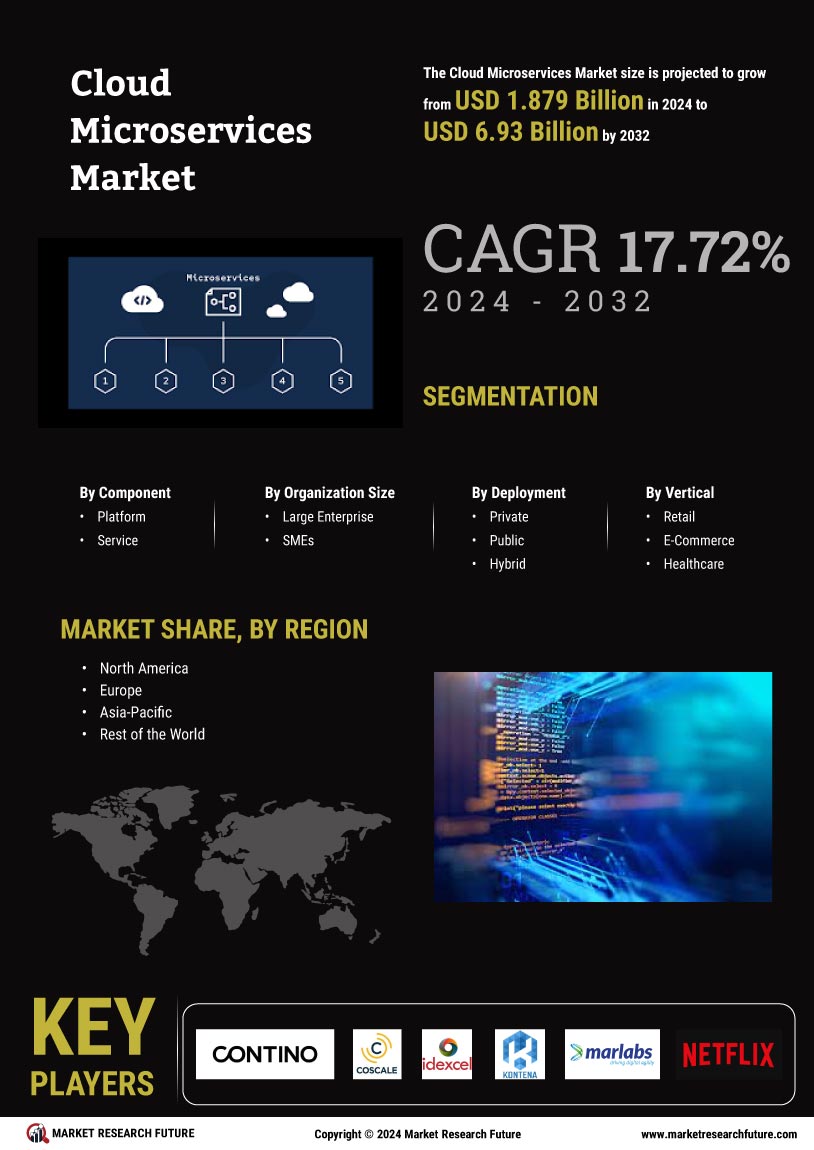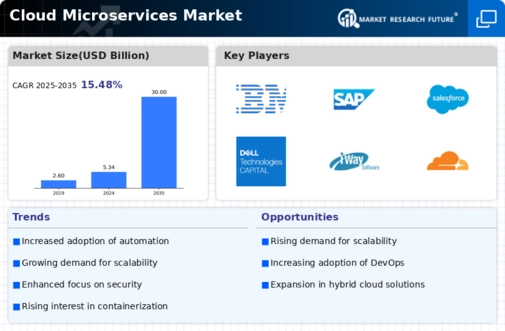The Cloud Microservices Market is currently characterized by a dynamic competitive landscape, driven by rapid technological advancements and an increasing demand for scalable, flexible solutions. Major players such as Amazon Web Services (US), Microsoft (US), and Google Cloud (US) are at the forefront, leveraging their extensive resources to innovate and expand their service offerings. These companies are strategically positioned to capitalize on the growing trend of digital transformation, with a focus on enhancing customer experiences through tailored microservices solutions. Their operational strategies, which include aggressive investments in research and development, partnerships, and regional expansions, collectively shape a competitive environment that is both robust and evolving.
Key business tactics employed by these companies include optimizing supply chains and localizing service offerings to better meet regional demands. The market appears to be moderately fragmented, with a mix of established giants and emerging players vying for market share. This competitive structure allows for a diverse range of services and innovations, as companies strive to differentiate themselves in a crowded marketplace. The collective influence of these key players fosters an environment ripe for collaboration and competition, driving continuous improvement and innovation.
In September 2025, Amazon Web Services (US) announced the launch of its new microservices framework designed to enhance application development efficiency. This strategic move is significant as it aims to streamline the deployment of cloud-native applications, thereby attracting a broader customer base seeking agility and speed in their operations. By focusing on simplifying the development process, AWS reinforces its position as a leader in the cloud microservices space, potentially increasing its market share.
In August 2025, Microsoft (US) unveiled a partnership with a leading AI firm to integrate advanced machine learning capabilities into its Azure microservices platform. This collaboration is indicative of a broader trend towards AI integration within cloud services, suggesting that Microsoft is keen on enhancing its offerings to meet the evolving needs of businesses. The strategic importance of this partnership lies in its potential to provide customers with more intelligent and automated solutions, thereby enhancing user experience and operational efficiency.
In July 2025, Google Cloud (US) expanded its microservices capabilities by acquiring a startup specializing in container orchestration technologies. This acquisition is particularly noteworthy as it aligns with the growing demand for containerized applications, which are essential for modern microservices architectures. By integrating this technology, Google Cloud positions itself to offer more robust and scalable solutions, further solidifying its competitive edge in the market.
As of October 2025, current competitive trends in the Cloud Microservices Market are heavily influenced by digitalization, sustainability initiatives, and the integration of artificial intelligence. Strategic alliances are increasingly shaping the landscape, as companies recognize the value of collaboration in driving innovation. Looking ahead, it is likely that competitive differentiation will evolve, shifting from traditional price-based competition to a focus on innovation, technological advancements, and supply chain reliability. This transition underscores the importance of agility and responsiveness in meeting customer demands in an ever-changing market.

















Leave a Comment